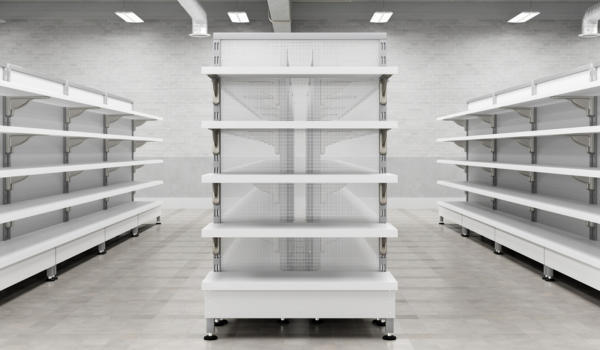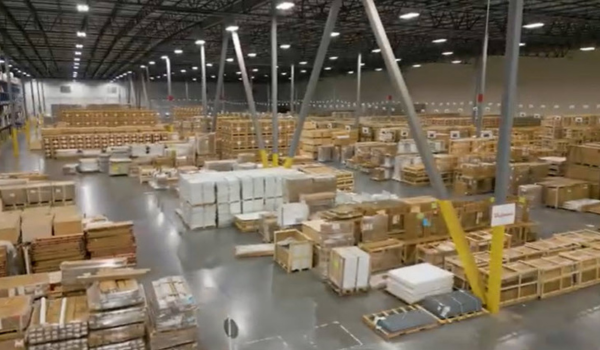A crucial part of your store remodel program is making sure each site receives needed fixtures, furniture, and equipment (FF&E). But if you rely on vendor-direct, just-in-time deliveries to do that, you could be missing opportunities to stay nimble when challenges arise and ultimately squandering time and money in the process.
“No one wants their store remodel program to drag on and on. In fact, you ideally want to find ways to speed it up,” says Phillip Walker, Director of Business Development for Store Opening Solutions.
Below we’ll dive into five factors that could be hindering the efficiency of your FF&E process. Along the way, we’ll also explain how an alternative approach—FF&E consolidation—could be a better option. Let’s take a closer look.
1. You’re more vulnerable to schedule disruptions
When you use vendor-direct, just-in-time delivery for getting FF&E into remodel sites, you’re making yourself much more vulnerable to schedule disruptions.
“What happens when, say, gondolas or checkout registers or some other major FF&E are delayed? It can create a negative chain reaction that throws off your entire remodel schedule,” says Store Opening Solutions’ Phillip Walker.
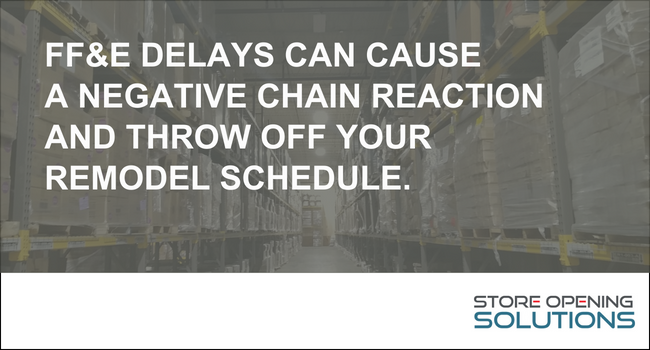
Of course, expedited deliveries may get you out of some jams. But they’ll cost you. Moreover, it may not take many of them to blow up a budget.
How FF&E consolidation improves your remodel program
You might think that bracing for disruptions is par for the course, but does it really have to be? When you consolidate your FF&E, you partner with a consolidator who receives and warehouses the FF&E required for your store remodels. And with your own designated warehouse space, you’re free to order FF&E items well in advance.
That means FF&E will be sitting ready to be picked and delivered to remodel sites when needed. Now you can set your schedule knowing that at least one major component of your remodel—your FF&E—is taken care of.
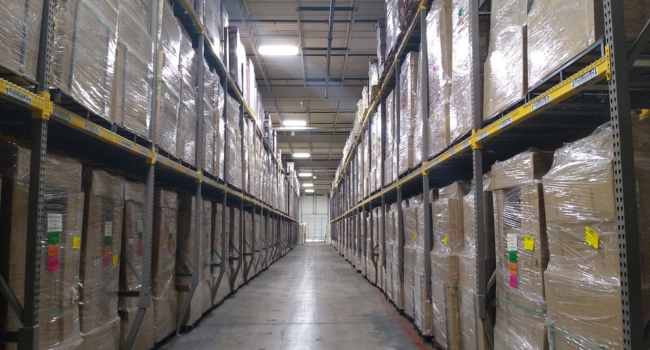
Note also that consolidation can work well even if you’re ordering incrementally. Imagine you plan to do 100 stores next year, but funding is released quarterly. “You can create a disruption buffer by ordering enough for 30 or so stores per quarter,” says Walker. “You now have safety stock built in just in case of any delays with your next round of orders.”
2. You can’t speed up your remodel schedule
Sometimes favorable circumstances emerge that make it possible to expedite your remodel schedule. Unfortunately, using a vendor-direct approach for your FF&E often means being locked into the order schedule you established months earlier—even when you’d rather not be.
“Think about your fixture manufacturer, for example,” says Walker. “If they’ve already slated individual store orders to be built and shipped at designated times, it can be nearly impossible to get them to change that schedule. After all, they have their own internal reasons to stick to a schedule.”
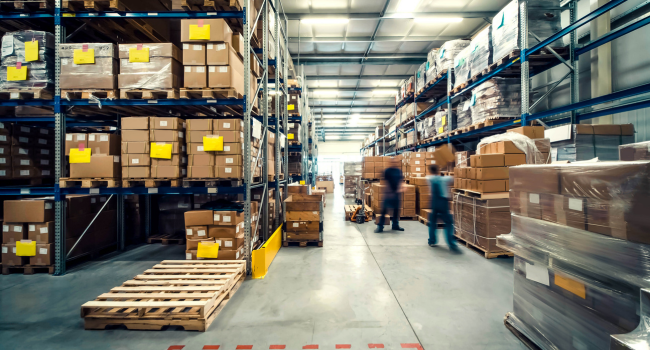
How FF&E consolidation improves your remodel program
FF&E consolidation frees you from those schedule constraints because, remember, your fixtures are already with your consolidator. So what if, for instance, you have a run where you’re doing two stores a week, but you look to the coming summer and decide you want to push it to five stores a week?
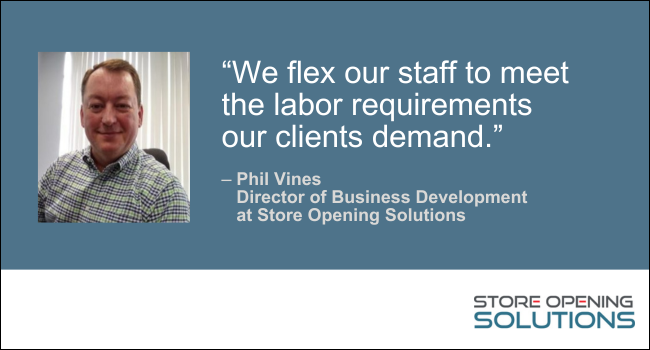
That’s not a problem when you use consolidation because your consolidator can adapt to your preferred schedule. “What we do here at SOS is flex our staff to meet the labor requirements our clients demand,” says Walker. “So, we can pick and deliver orders as fast as you need them. Just give us a heads-up, typically three to four weeks out, and we can make it happen.”
3. You’re forced to hit pause due to circumstances beyond your control
Now imagine a scenario where you have to pause your remodel schedule because of, say, a blizzard in the Northeast or a hurricane in the Gulf. Wouldn’t it be great if you could just continue the remodel momentum by conveniently shifting FF&E deliveries to some other area?
That won’t be easy with a vendor-direct, store-specific order model. In fact, not only will it be challenging to have vendors alter their schedules for you; you might even need to figure out where you can redirect your FF&E deliveries for temporary storage—at potentially exorbitant prices.
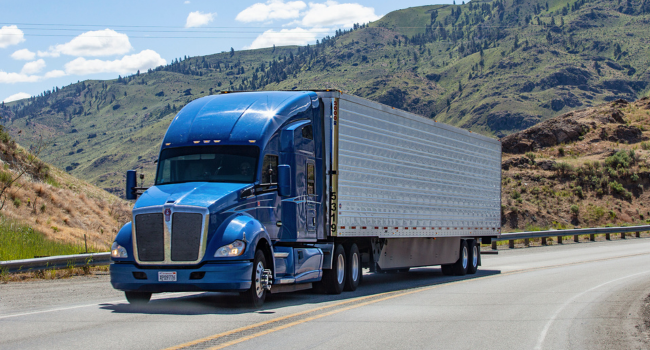
How FF&E consolidation improves your remodel program
Here again, a consolidation model can save the day. “If you have the ability to send crews to another region, you can keep your remodel schedule moving forward,” says Walker. “You just call your consolidator and tell them to hold on specific orders and instead pick a different set of orders for another region.”
4. You’re stuck with orders even when you’d like to change them
Remodeling typically involves moving from an old layout to what ideally is a new and improved one. In some cases, you could even be experimenting with formats in test stores.
“Let’s say you’re testing a new format with four self-checkouts and one manned register, and it’s working so well you’d love to use that format in more of your remodels. But if your vendor already has your future orders in their pipeline, it’s much more difficult to make changes last minute,” Walker says.

How FF&E consolidation improves your remodel program
Compared to a conventional approach to FF&E, consolidation empowers you to change actual order contents much later in the game. “That can be huge if you make some discoveries in the middle of your program that you want reflected in upcoming remodels,” says Walker.
5. You waste money by discarding potentially reusable FF&E
Remodeling often involves the removal and disposal of certain FF&E items. However, there’s also a chance some of that FF&E could be useful in other stores.
But when you’re pressed for time, coordinating what FF&E items to keep can seem like more trouble than it’s worth, especially without a physical space to temporarily store them nor a system to track and inventory them.
Unfortunately, this can mean discarding potentially valuable FF&E.
How FF&E consolidation can help
When you use an FF&E consolidation model, your consolidator can lead a process known as reverse logistics. This involves retrieving the FF&E items you want to keep, incorporating them into your trackable inventory, and storing them in your designated warehouse space until you need them.
You’re now saving money, possibly expediting other store projects because you have FF&E on hand, and even making an eco-friendly move by minimizing waste.
How to know if FF&E consolidation is right for you
As retail competition intensifies, so too does the need to operate more cost-effectively. You’ve just seen a variety of ways that FF&E consolidation can help you remodel stores more efficiently and reliably. And the approach can work equally well for improving your store openings and conversions.
But you don’t have to take our word for it. If you want some hard numbers on just how much you could improve upon your current FF&E system, we encourage you to take advantage of Store Opening Solutions’ free FF&E program audit.
About Store Opening Solutions
We support the strategic vision of retail organizations with focused expertise in the consolidation and installation of store fixtures and equipment. Our dedicated team embraces your vision and partners with you to create appropriate inventory control processes.




